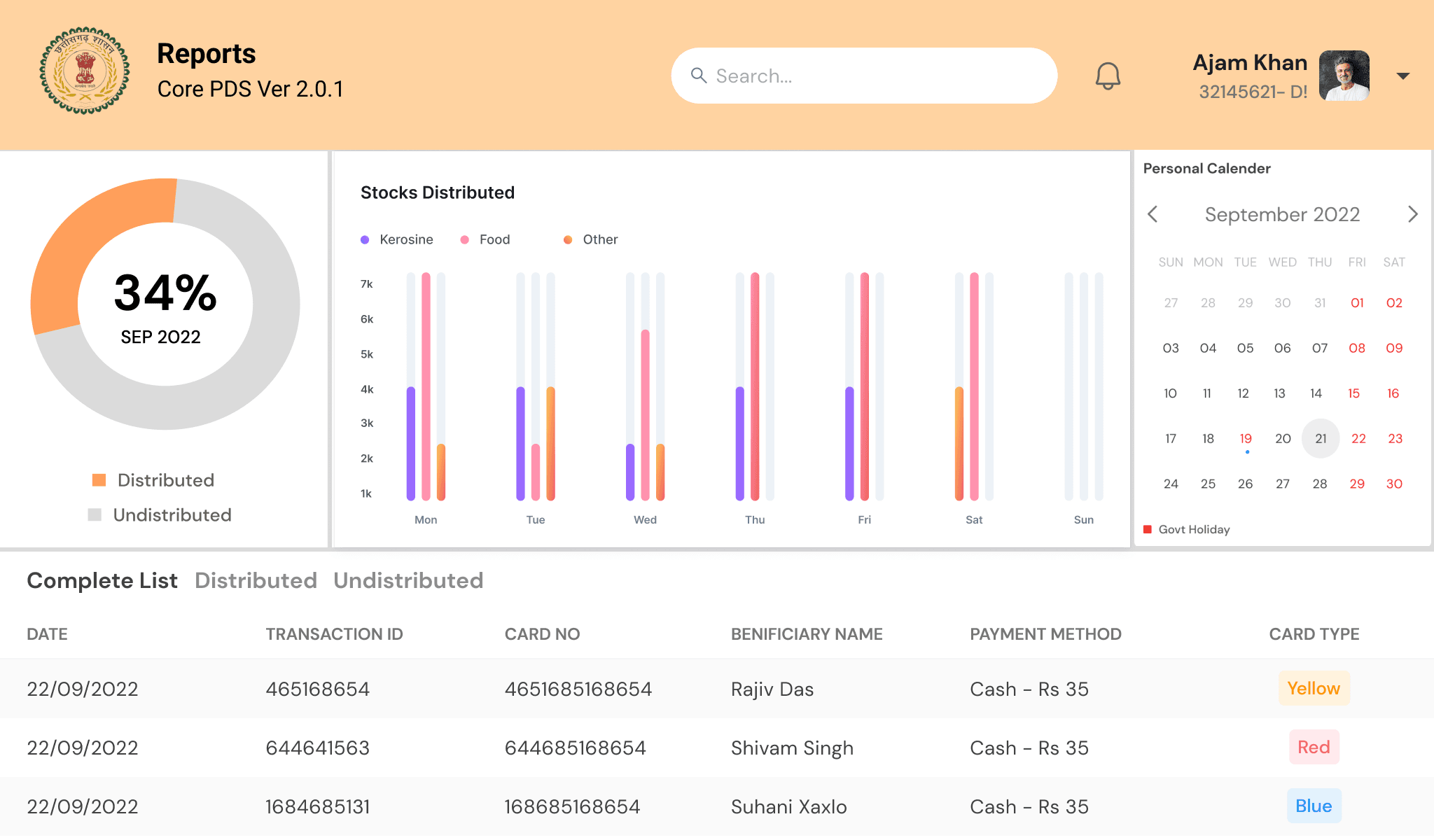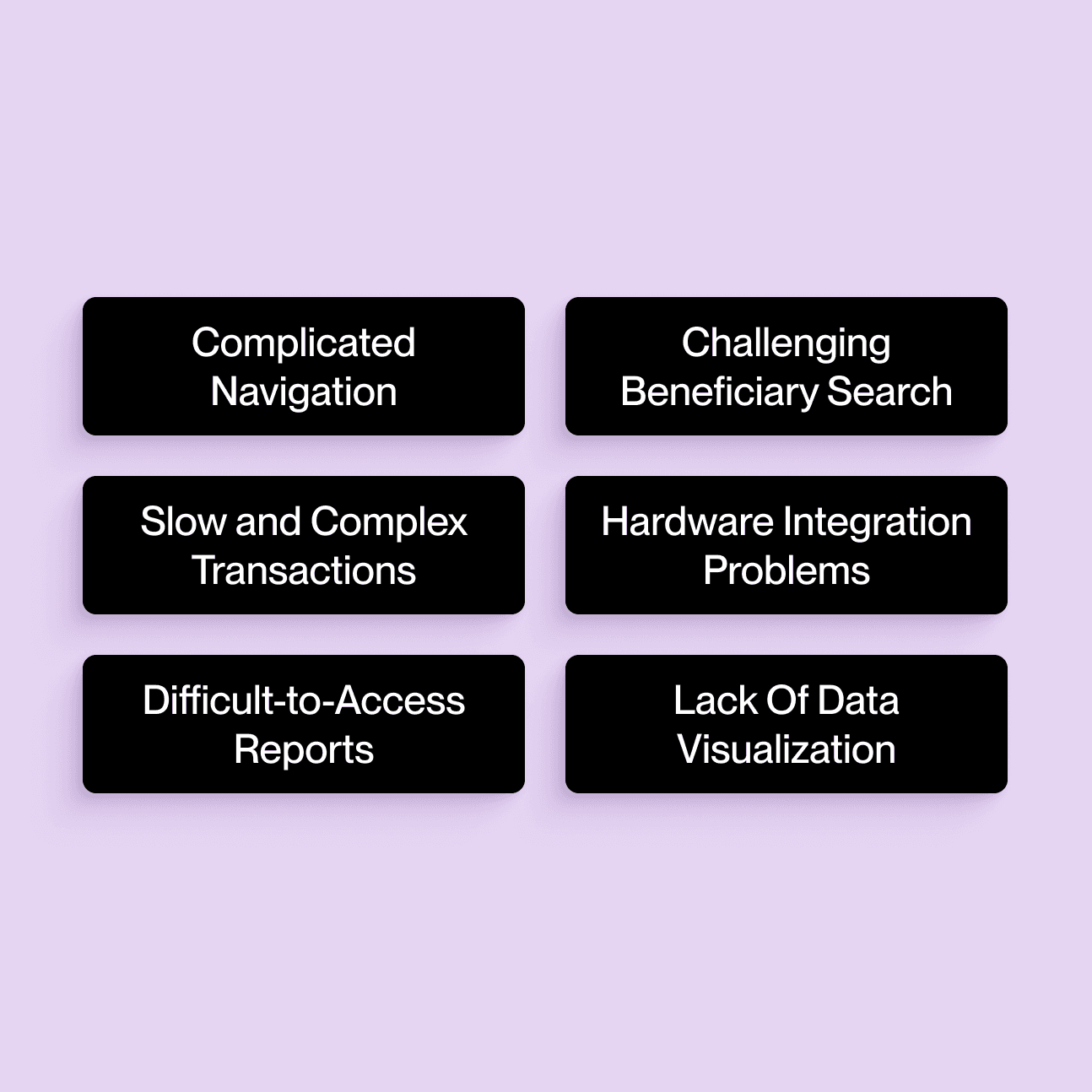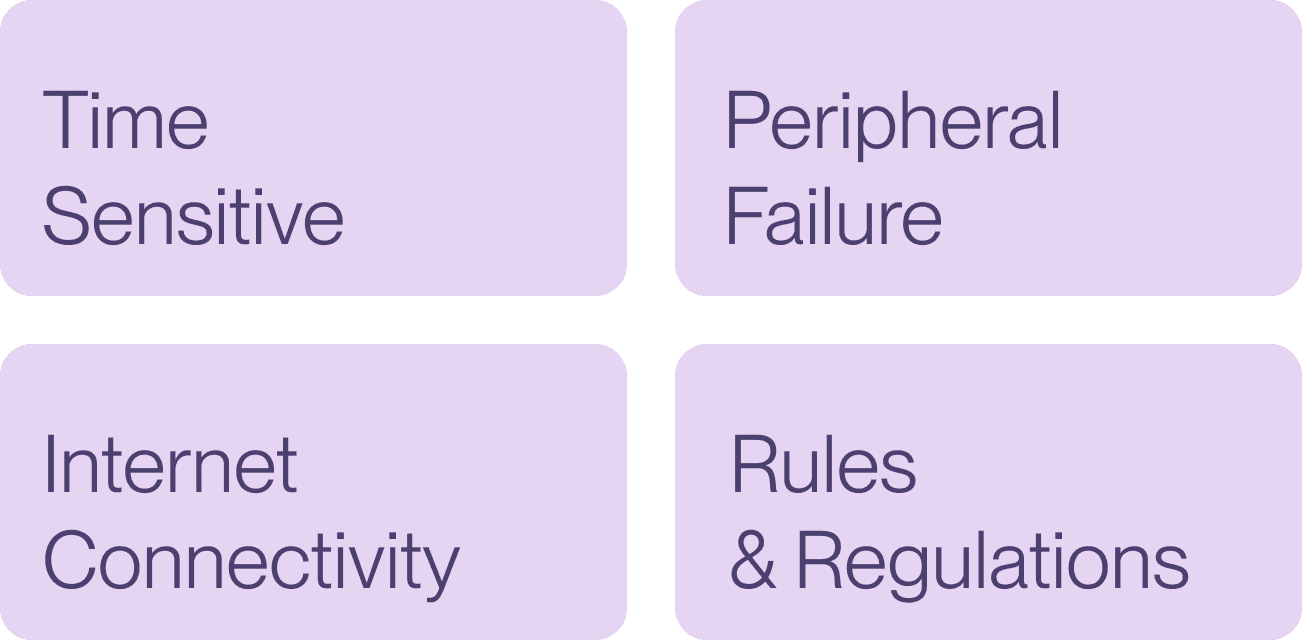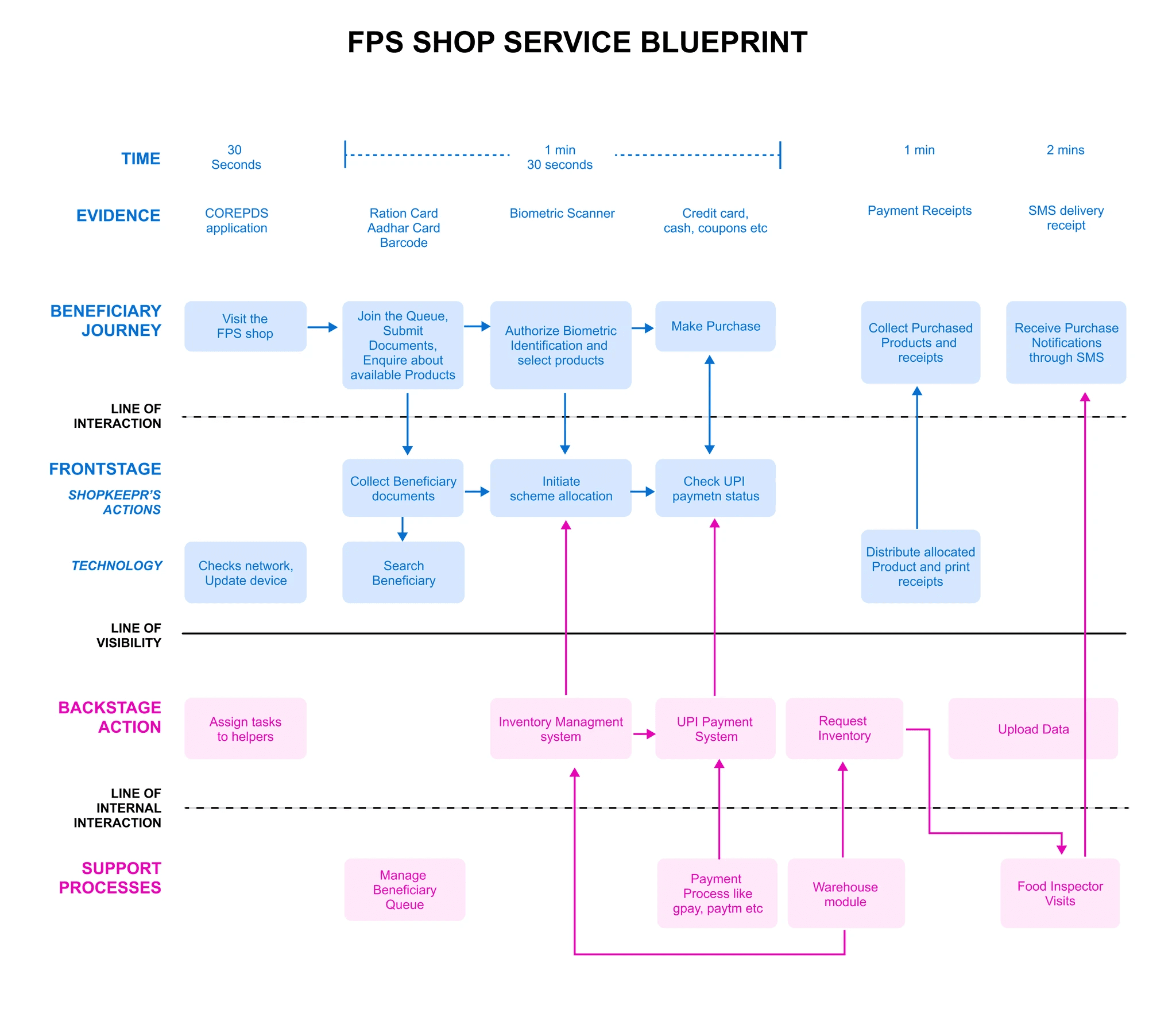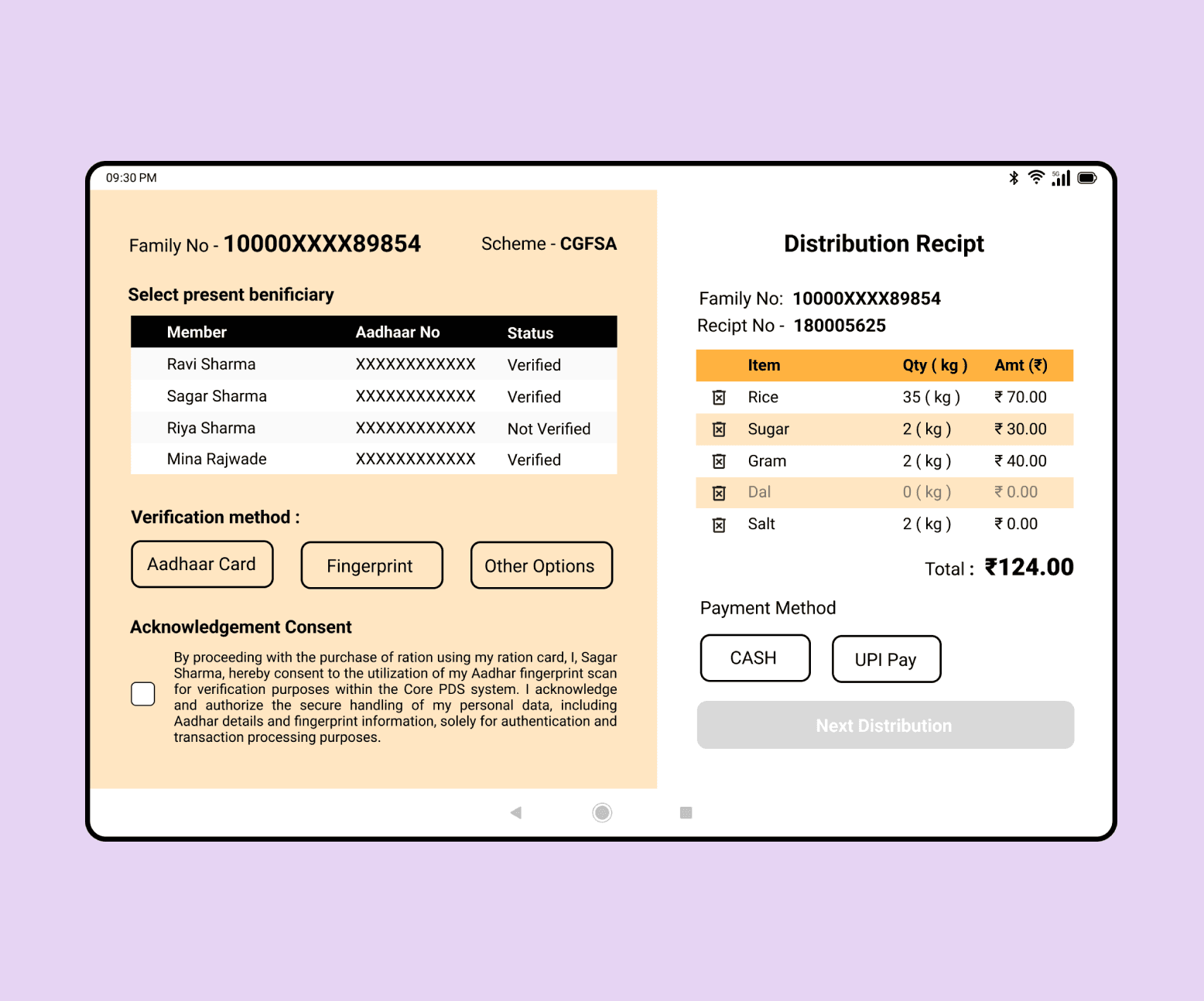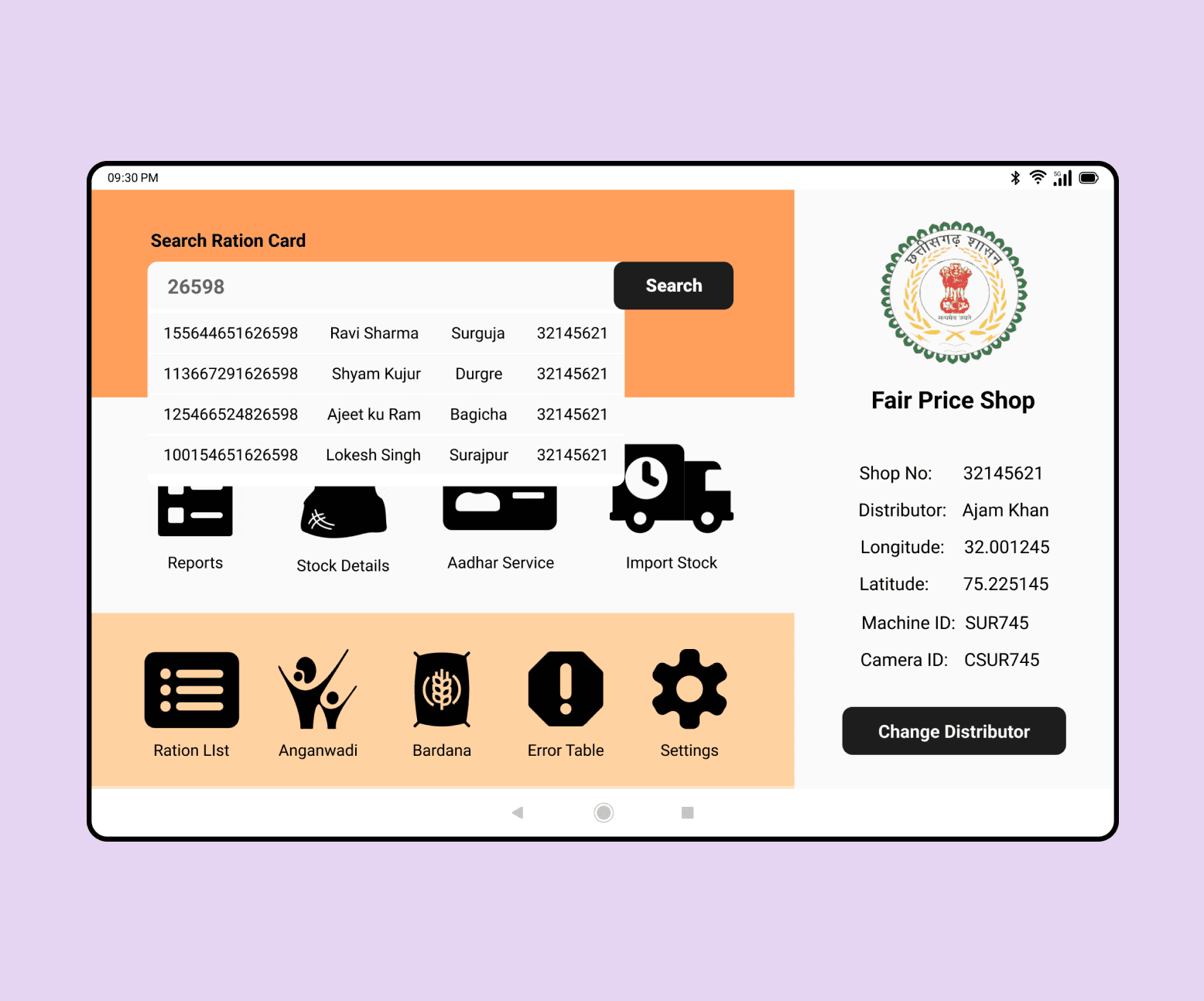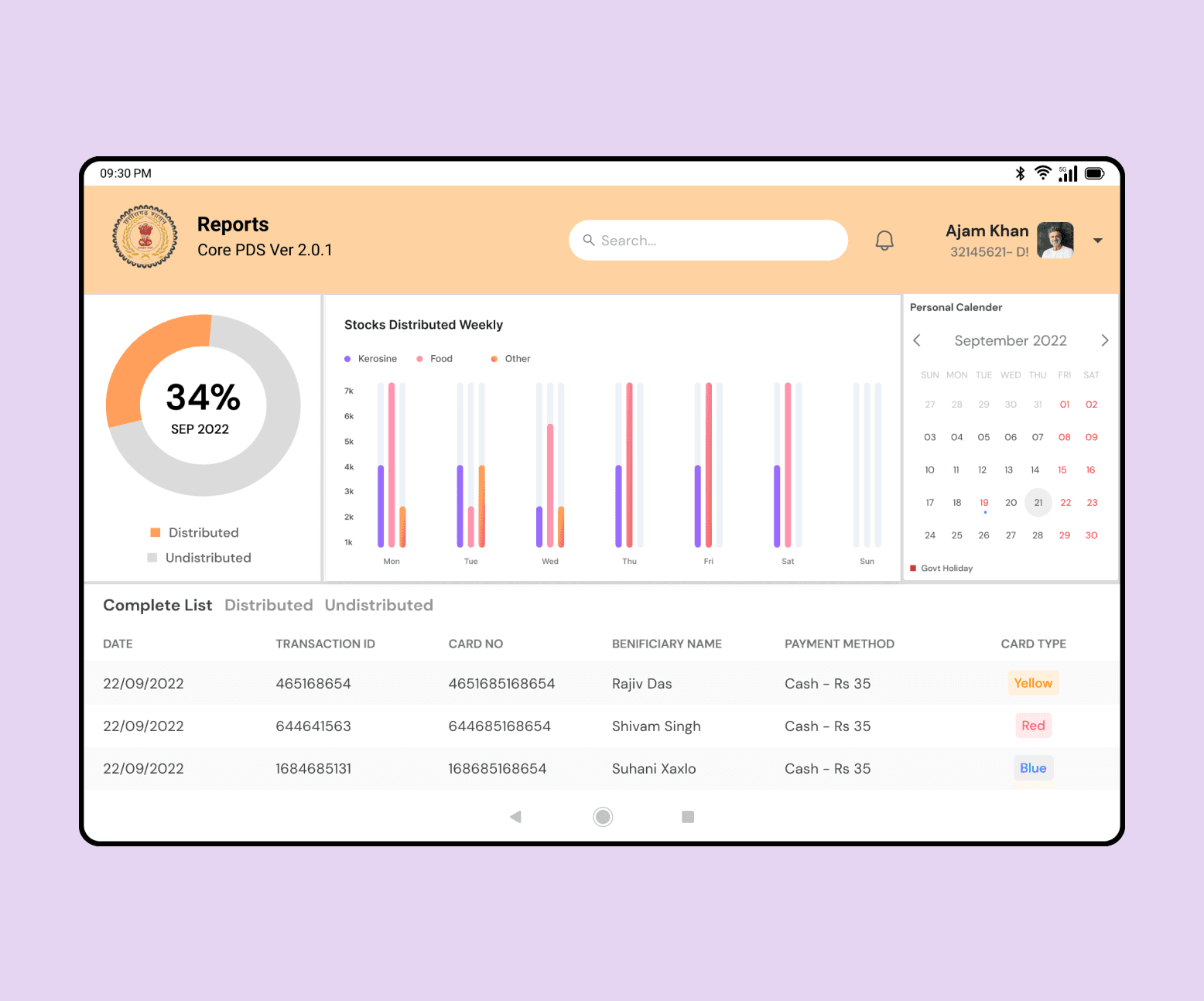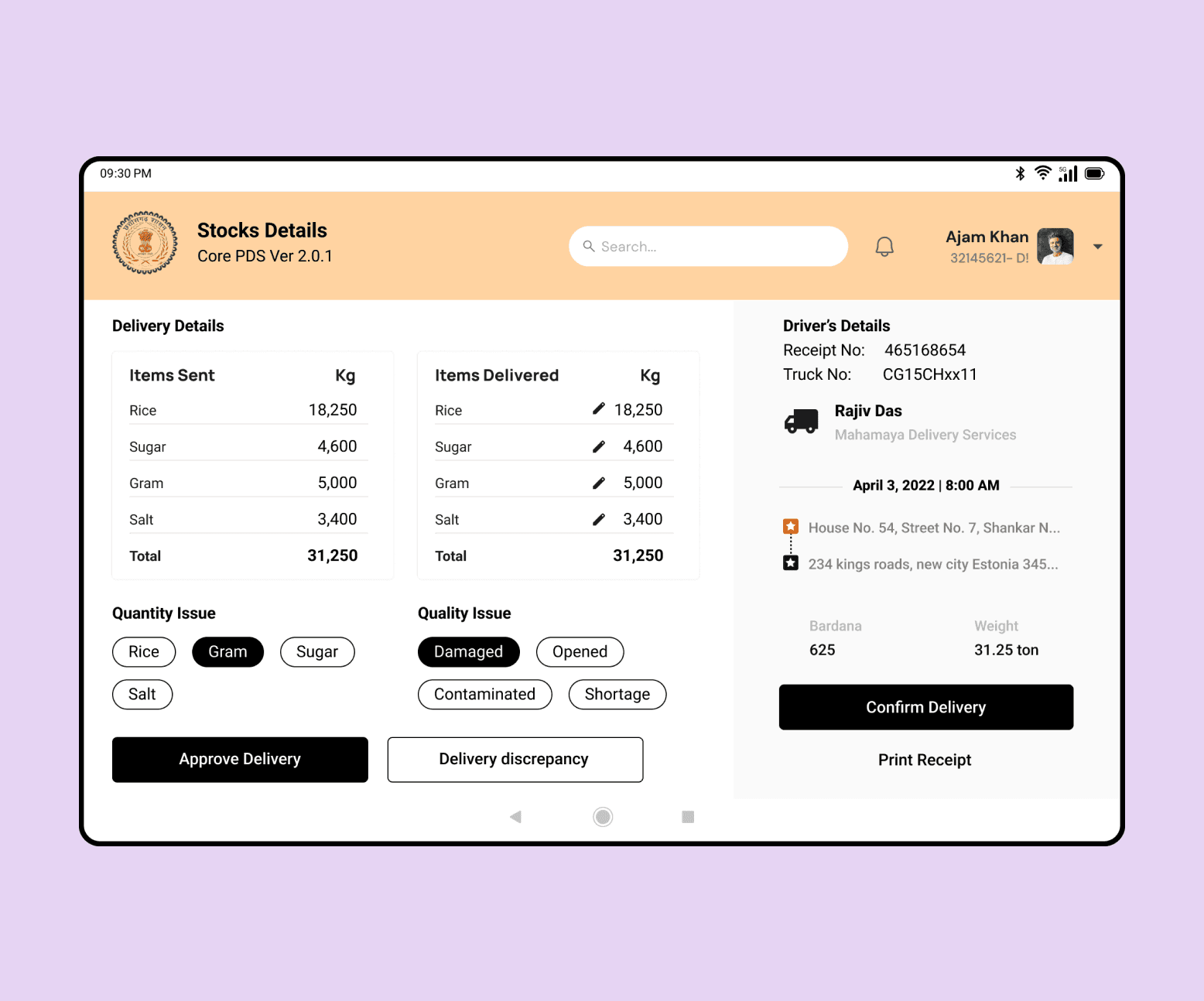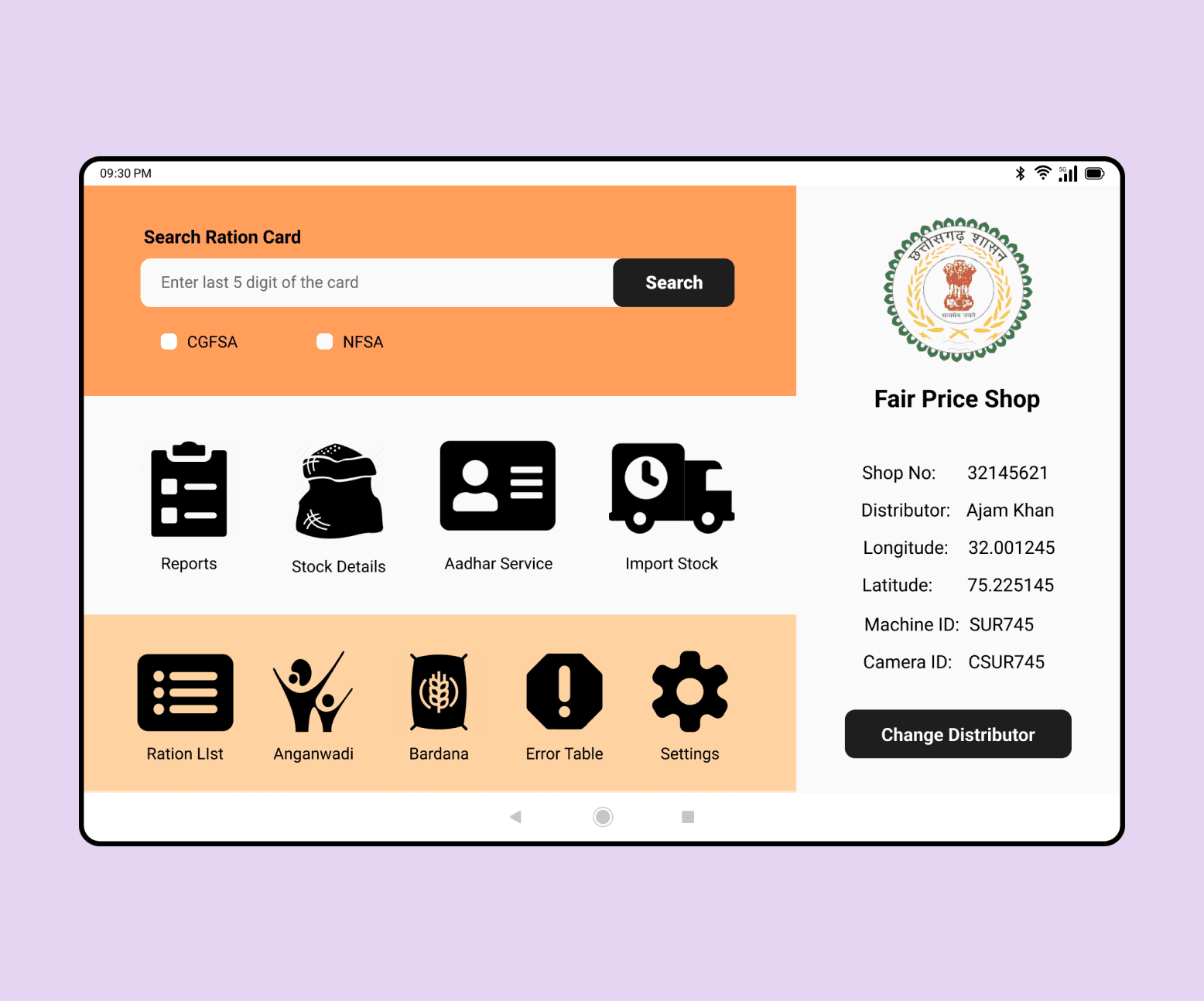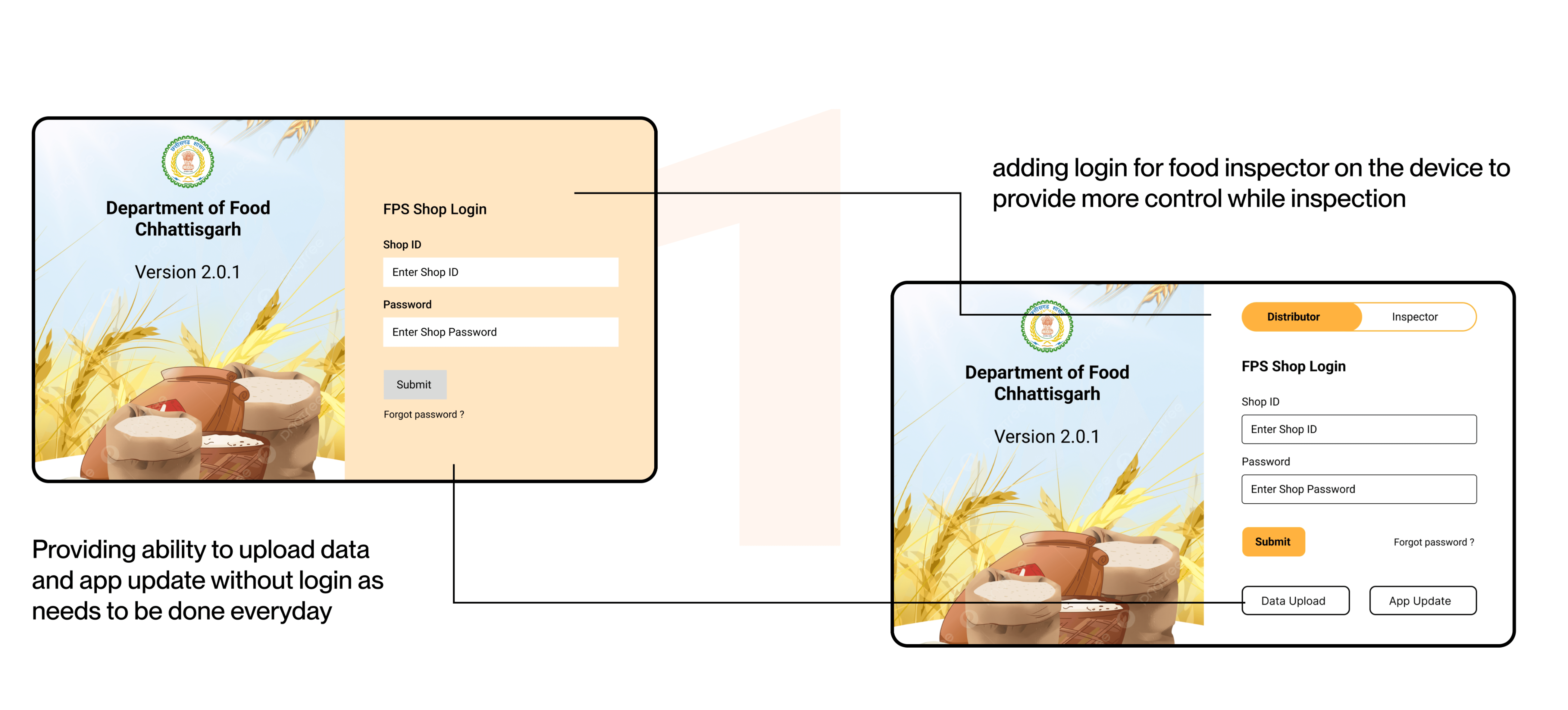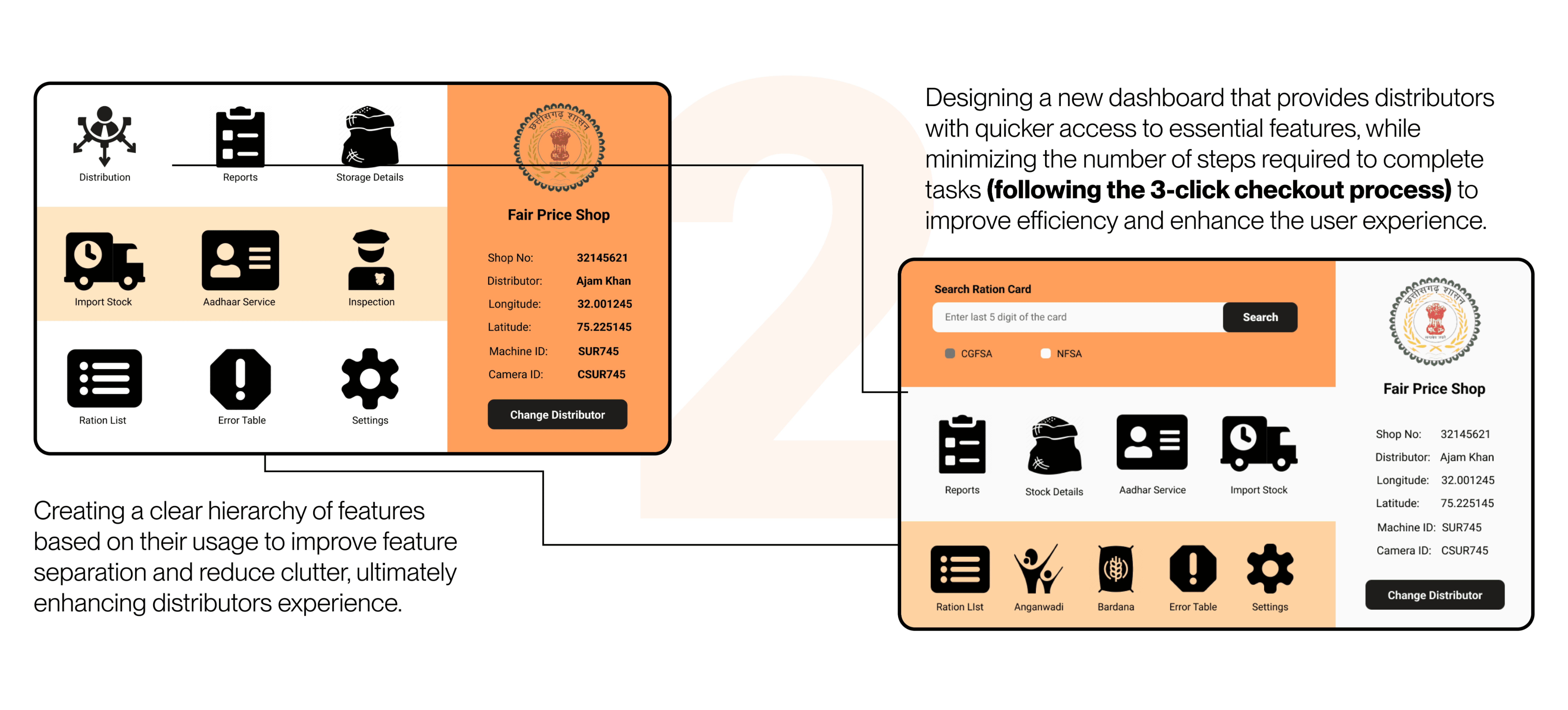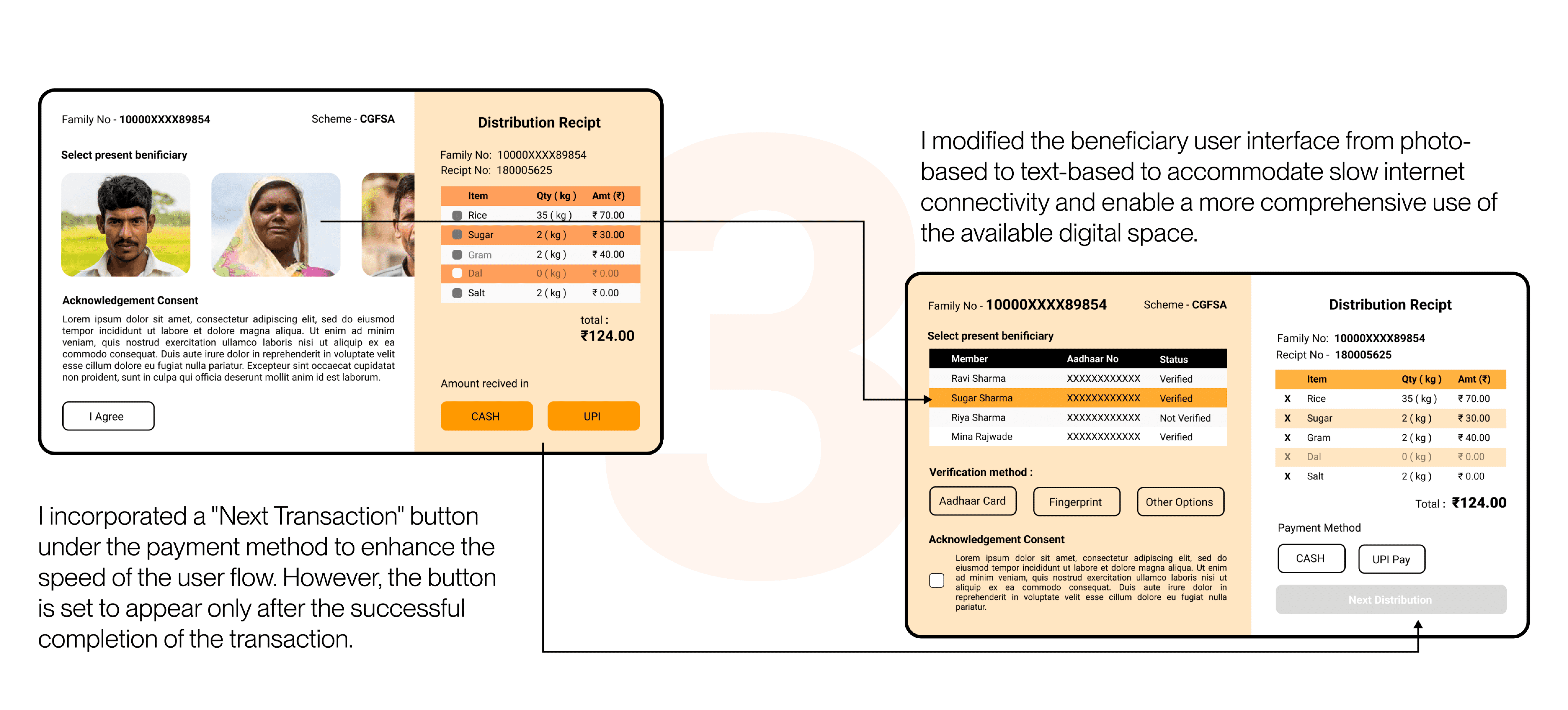Helping shopkeepers enhance food distribution efficiency and customer satisfaction through streamlined and swift transactions
Design Lead
9 Months
What is CORE PDS ?
A Game-Changer in Public Distribution
COREPDS, launched in 2014, is an application designed to manage and distribute essential commodities to poor and underprivileged communities. It digitalized food distribution and achieved significant success, receiving multiple awards for its innovative approach.
Monthly Rations for $1 Only.
Background
COREPDS started as a model project prototype with a few shops and expanded to over 12,000 shops in five years, but the 2016 app and devices couldn't handle the growth.
This led to increased customer complaints and declining distribution rates, highlighting the need for significant improvements to meet the demands of the expanding food distribution network.
UX Research
Shopkeepers need simplified transactions with integrated functionality.
Effective management and distribution of essential commodities are critical for the success of CORE PDS Chhattisgarh.
Our UX research team identified six core problems faced by distributors that our design team must address to enhance efficiency, usability, and transparency in the distribution
5 focus group discussions in five differen districts
10 usability testing sessions in most problematic shops
72 hours of in store observations
10 one to one user interviews with the shopkeepers
15 beneficiary interviews
Approach
We approached by swiftly designing and brainstorming UI concepts for the new hardware device
Design Thinking
Designing for Inclusive Accessibility
The COREPDS app's original design didn't fully accommodate the diverse needs of all users, particularly those with limited education or tech experience. To address this, we adopted a more inclusive approach, ensuring the design worked for everyone.
Spectrums of Challenges
We recognized that users face temporary or permanent challenges that affect how they interact with the app. By understanding these spectrums, we ensured the app could adapt to various needs.
Situational Challenges
Navigating Conflicts
Resolving Stakeholder Disputes Over New Device Allocation
A major conflict arose among stakeholders regarding fund allocation for the proposed new device. Many doubted its usefulness due to a lack of technological knowledge, while a few supported it.
To resolve this, I reached out to several device manufacturers and secured at least one device for demonstration. After real-time testing, the superior performance of the new device became evident, highlighting its potential to improve transaction speed and efficiency.
Solution
Ensuring Future-Ready Scalability and Performance
The redesigned COREPDS application guarantees scalability and adaptability, featuring enhanced functionalities that support future growth and manage increased loads without compromising performance.
04
Improved Search Functionality
Addressing the challenging card and beneficiary searches that previously required a 16-digit number.
The new redesigned search bar allows searches using the last 5 digits of ration cards, barcode scans, and Aadhar cards, enhancing user experience by providing quicker access to beneficiary details.
87% decrease in search time
72% reduction in beneficiary search errors
User testing and improvement
Optimization and Hypothesis validation
To optimize user experience, we conducted rigorous AB testing sessions over two months for optimization and hypothesis validation. These sessions gathered user feedback and insights to refine design elements and functionalities, ultimately enhancing the application's usability and efficiency.



